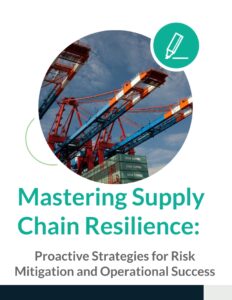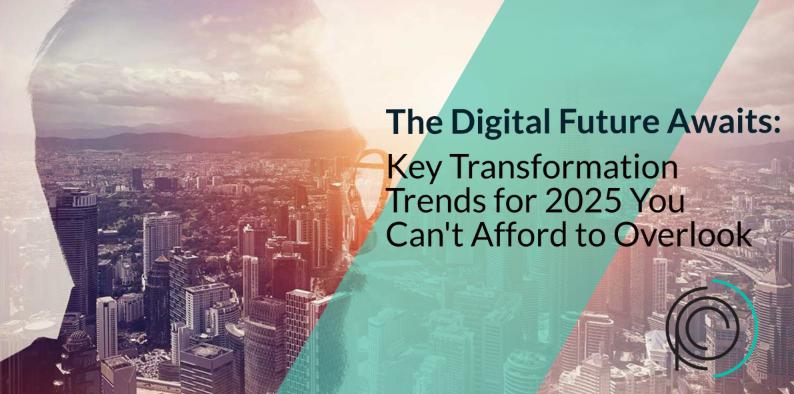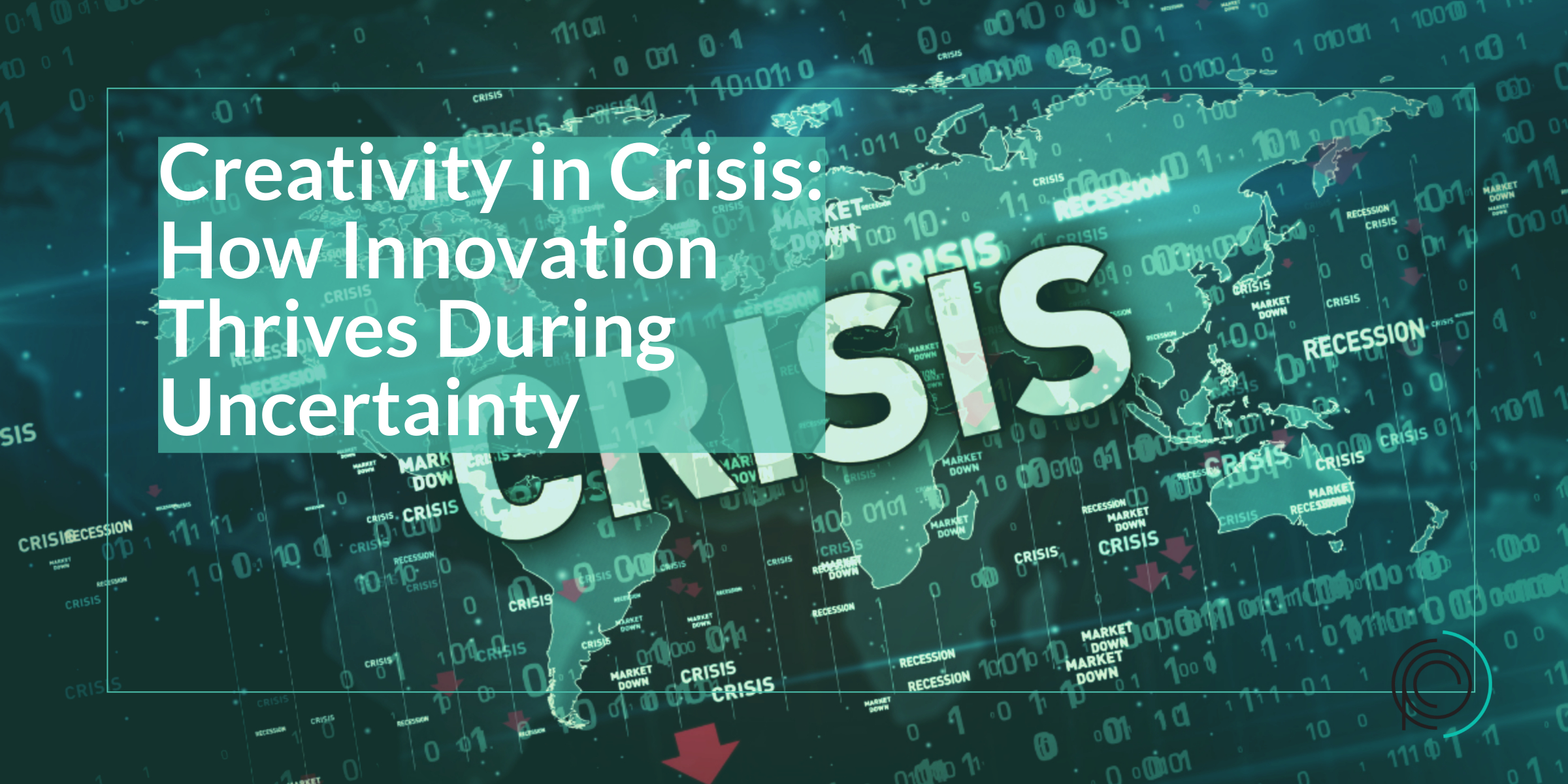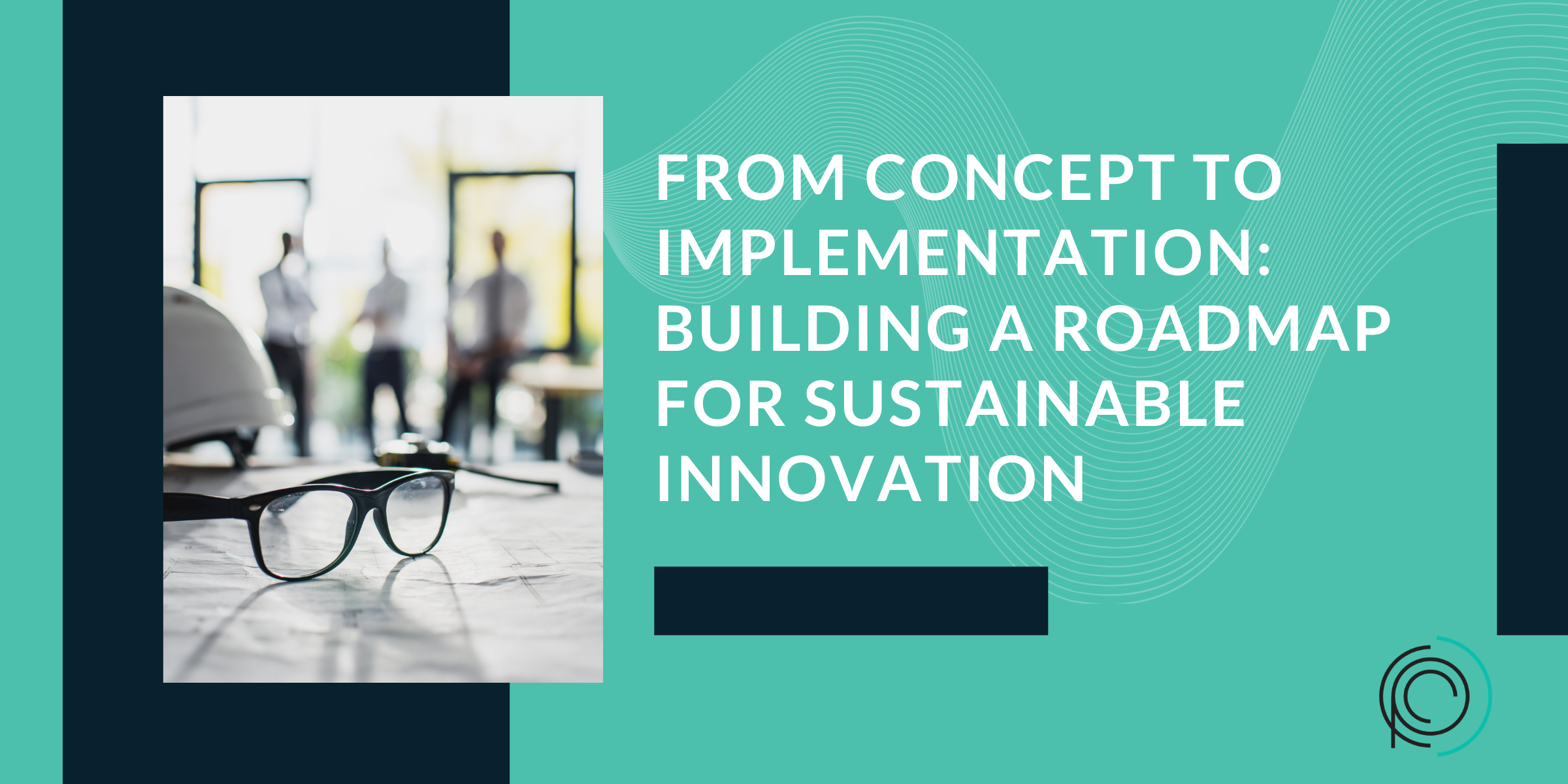It’s time to look at the top trends shaping the digital landscape and redefine how businesses operate. This blog post will explore cutting-edge technologies and strategies that will drive digital transformation this year, offering valuable insights and practical tips for businesses ready to adapt and thrive.
The Rise of AI and Machine Learning
Artificial intelligence (AI) and machine learning (ML) are leading the charge in digital transformation, revolutionizing the way we conduct business. Their impact is poised to grow even more significant as we uncover innovative methods to integrate these technologies into our operations. In today’s competitive landscape, businesses are leveraging AI and ML to automate mundane tasks, enhance customer experiences, and make informed, data-driven decisions that can set them apart from their competitors.
AI possesses the remarkable ability to analyze vast amounts of data in a fraction of the time it would take a human. This rapid processing allows AI to identify patterns, trends, and insights that might elude human analysts. Consequently, businesses can use this capability to personalize customer experiences more effectively, predict market trends with greater accuracy, and optimize their operations for better efficiency. For instance, e-commerce companies harness the power of AI to recommend products based on detailed analyses of customer behavior and purchase history, ultimately increasing both sales and customer satisfaction.
Machine learning, a crucial subset of AI, empowers systems to learn and improve over time based on experience, all without the need for explicit programming. This means that the more a machine learning system is used, the better it becomes at performing its tasks. Industry giants like Amazon and Google have been at the forefront of employing ML algorithms to refine their search results, improve ad targeting, and enhance product recommendations that cater specifically to user preferences. As machine learning technology continues to advance, its applications will expand into various business functions, including supply chain management, customer service, and even financial forecasting, driving efficiency, and innovation, and opening new avenues for growth.
The combination of AI and machine learning is not just a trend; it represents a fundamental shift in how businesses operate. As organizations continue to embrace these technologies, the potential for new strategies and solutions will expand, leading to unprecedented opportunities for success in the digital age. The future of AI and ML is bright, and those who adopt them early will likely reap significant rewards.
The Internet of Things (IoT) Revolution
The Internet of Things (IoT) is transforming how businesses operate by connecting devices and systems to gather and share data. This year, IoT is expected to be more integrated into various industries, from manufacturing to healthcare.
In manufacturing, IoT devices play a crucial role by continuously monitoring equipment performance in real time. These smart devices collect and analyze data on various parameters, allowing for the prediction of maintenance needs before issues arise. By identifying potential problems early, manufacturers can prevent costly downtime that could disrupt production schedules and lead to significant financial losses. This predictive maintenance approach not only saves money by minimizing unexpected repairs and interruptions but also extends the lifespan of machinery, ensuring that equipment operates at peak efficiency for a longer period. Ultimately, leveraging IoT technology in manufacturing enhances operational reliability and boosts overall productivity.
In healthcare, IoT (Internet of Things) devices play a crucial role in monitoring patient vitals by continuously tracking metrics such as heart rate, blood pressure, and oxygen levels. These devices can send real-time alerts to medical professionals when they detect abnormalities, allowing for timely interventions that can significantly improve patient outcomes. By leveraging this technology, healthcare providers can enhance their ability to respond quickly to potential health issues, ultimately leading to better care and increased patient safety. Additionally, the data collected from these devices can help in analyzing trends and improving overall health management strategies.
Retail businesses are increasingly leveraging IoT technology to enhance customer experiences in a variety of innovative ways. For instance, smart shelves equipped with sensors can monitor product availability in real time, ensuring that popular items are always in stock. This significantly reduces stockouts, which can frustrate customers and lead to lost sales, ultimately increasing overall customer satisfaction. Additionally, advanced inventory management systems use IoT data to predict demand trends, allowing retailers to optimize their supply chains and improve operational efficiency. As IoT technology continues to evolve, its potential applications and benefits will expand even further, integrating seamlessly with other digital tools and platforms. This makes IoT not just a trend, but a crucial component of digital transformation strategies for retailers looking to stay competitive in an ever-changing market.
Blockchain Beyond Cryptocurrency
Blockchain technology is often associated with cryptocurrencies like Bitcoin, but its potential goes far beyond digital currency. Blockchain is expected to play a significant role in enhancing security this year, as well as transparency, and efficiency in various business processes.
One of the key benefits of blockchain is its ability to create immutable records of transactions. This feature is particularly valuable in supply chain management, where transparency and traceability are essential. For instance, blockchain can track the origin and movement of goods, ensuring authenticity and reducing the risk of fraud.
Financial services are also adopting blockchain to streamline processes and reduce costs. Smart contracts, which automatically execute agreements when predefined conditions are met, can eliminate the need for intermediaries, speeding up transactions and reducing expenses. As businesses continue to explore blockchain applications, their impact on digital transformation will become more pronounced.
Edge Computing Takes Center Stage
While you may not be familiar with the term “Edge computing,” you’re likely aware of its technology. This innovative approach is the foundation behind the development of driverless cars. Edge computing is a trend that complements the growth of IoT and the need for real-time data processing. Unlike traditional cloud computing, which relies on centralized data centers, edge computing processes data closer to the source, reducing latency and improving efficiency.
This year, edge computing is anticipated to become increasingly prevalent across various industries, with a significant focus on autonomous vehicles. These innovative vehicles rely heavily on real-time data processing to make quick, informed decisions that ensure passenger and pedestrian safety. By utilizing edge computing, autonomous vehicles can process data locally rather than relying solely on cloud-based solutions, which significantly reduces latency. This local processing capability allows these vehicles to rapidly analyze and respond to changing conditions on the road, such as sudden obstacles, traffic signals, or unpredictable weather. Furthermore, as more vehicles implement edge computing technologies, the overall safety and efficiency of transportation systems are likely to improve, paving the way for smarter, more responsive urban mobility solutions in the future. While we’re not claiming it’s flawless just yet, this technology is making significant strides.
Similarly, in the manufacturing sector, edge computing enables real-time monitoring and control of production processes, which is becoming increasingly vital amid continued supply chain challenges. By processing data at or near the source—such as machinery and production lines—companies can quickly identify and address issues as they arise, preventing costly downtime and enhancing operational efficiency. This immediate data processing not only leads to improved responsiveness but also significantly boosts overall product quality, as manufacturers can make informed adjustments on the fly. As the demand for real-time data processing continues to grow, driven by the need for agility and precision in manufacturing, edge computing will undoubtedly play a crucial role in the digital transformation landscape, paving the way for smarter factories and more innovative production methods. This shift will empower manufacturers to stay competitive in a rapidly evolving market.
The Evolution of 5G Networks
The rollout of 5G networks is set to revolutionize connectivity in ways we have yet to fully grasp, offering significantly faster speeds, lower latency, and greater capacity than previous generations of wireless technology. This leap into a new era of telecommunications is not just about speed; it represents a foundational change in how we connect and communicate. We are seeing a significant impact on manufacturing and shipping logistics, with 5G emerging as a crucial catalyst for digital transformation. By enabling instant access to real-time data and analytics, 5G can streamline operations, reduce downtime, and enhance supply chain efficiency. Furthermore, it will facilitate the expansion of the Internet of Things (IoT), augmented reality (AR), and virtual reality (VR) applications, which are becoming increasingly integral to various sectors. As a result, industries ranging from healthcare to entertainment will experience unprecedented innovation and efficiency, paving the way for smarter cities, more responsive production systems, and enhanced customer experiences. The possibilities are limitless as we embrace this transformative technology.
AR and VR applications will greatly benefit from 5G’s enhanced connectivity, opening up a world of possibilities. These cutting-edge technologies have the potential to revolutionize various sectors, including retail, healthcare, education, and entertainment. For instance, AR can create interactive shopping experiences that allow customers to visualize products in their own space before making a purchase, enhancing customer engagement and satisfaction.
As 5G networks become more widespread, the speed and reliability they offer will not only improve the performance of these applications but will also drive digital transformation across industries, leading to innovative solutions and improved outcomes. The profound impact of 5G on AR and VR will reshape how we interact with technology in our daily lives.
Cybersecurity in the Age of Digital Transformation
As we become more digitally connected in our daily lives and professional endeavors, the importance of cybersecurity cannot be overstated. With the rise of remote work, cloud computing, and the Internet of Things (IoT), cybersecurity has emerged as a top priority for organizations striving to protect their data and systems from increasingly sophisticated and evolving threats. This heightened focus is critical as cyberattacks can lead to significant financial losses, reputational damage, and a loss of customer trust.
One of the key trends in cybersecurity currently gaining momentum is the adoption of artificial intelligence (AI) and machine learning (ML) technologies to detect and respond to threats more effectively. It may sound counterproductive at first, but AI-powered security systems possess the capability to analyze vast amounts of data in real-time. By identifying patterns and anomalies within this data, these systems enable businesses to detect potential threats before they have the opportunity to cause harm. For instance, AI can recognize unusual login attempts, such as multiple failed password entries from different locations, or unusual data access patterns that deviate from the norm. This smart detection triggers alerts, allowing cybersecurity teams to respond swiftly and mitigate risks proactively.
Another critical aspect of cybersecurity that organizations must prioritize is the implementation of zero-trust architecture. This modern security approach fundamentally assumes that no user or system can be automatically trusted, irrespective of whether they are inside or outside the organizational network. By continuously verifying the identity, role, and integrity of all users and devices, businesses can significantly reduce the risk of data breaches and better protect sensitive information. This rigorous verification process often involves multi-factor authentication, device posture checks, and real-time monitoring of user behavior, ensuring that only authorized users gain access to critical resources. As cyber threats continue to evolve, adopting a zero-trust mindset will be paramount for organizations committed to safeguarding their assets and maintaining their operational integrity.
Customer Experience and Personalization
Customer experience (CX) is a crucial differentiator for businesses in today’s marketplace. It encompasses every interaction a customer has with a brand, from the initial discovery to post-purchase support. Companies that prioritize CX and invest in personalization not only enhance customer satisfaction but also foster loyalty and trust. As consumers become more discerning, they increasingly expect tailored experiences that cater to their unique preferences and needs. This shift in expectation means that businesses that can successfully deliver on personalized experiences will gain a significant competitive edge, setting themselves apart in a crowded market and driving long-term success.
AI and machine learning play a significant role in enhancing customer experience. These technologies enable businesses to analyze customer data and behavior, providing insights that can be used to personalize interactions and offerings.
Example: AI can recommend products based on a customer’s browsing history, increasing the likelihood of a purchase.
Additionally, businesses are leveraging chatbots and virtual assistants to improve customer service. These AI-powered tools can handle routine inquiries, provide instant support, and even process transactions, freeing up human agents to focus on more complex tasks. By investing in CX and personalization, businesses can build stronger relationships with their customers and drive loyalty.
Remote Work and Collaboration Tools
While we don’t want to continue to harp on the past, the COVID-19 pandemic accelerated the adoption of remote work and collaboration tools, and this trend is expected to continue into 2025. Businesses are increasingly recognizing the benefits of remote work, including increased flexibility, reduced overhead costs, and access to a broader talent pool.
To support remote work, companies have increasingly invested in collaboration tools that promote effective communication and teamwork. Platforms such as Microsoft Teams, Slack, and Zoom have become indispensable for remote teams, helping them remain connected and productive. These tools provide features like video conferencing, file sharing, and project management, streamlining collaboration. This trend is set to continue its momentum into 2025.
In addition to collaboration tools, businesses are also adopting virtual workspaces and digital whiteboards. These tools provide a virtual environment where team members can brainstorm, share ideas, and work on projects in real time. By continuing to invest in remote work and collaboration tools, businesses can create a flexible and dynamic work environment that supports innovation and growth.
Sustainability and Green Technology
Sustainability is becoming increasingly important for businesses, and digital transformation can play a crucial role in supporting green initiatives. Companies that utilize technology to minimize their environmental footprint and promote sustainable practices will appeal to customers who prioritize a company’s ecological impact in their purchasing decisions—commonly known as green consumers.
One of the key trends in sustainability is the adoption of renewable energy sources. Businesses are investing in solar, wind, and other renewable energy technologies to reduce their carbon footprint and lower energy costs. For example, companies like Google and Apple have committed to using 100% renewable energy for their operations, setting an example for others to follow.
I want to emphasize that both small businesses and individuals have the ability to make a significant positive impact on these initiatives. By actively participating and contributing their unique resources and ideas, they can drive meaningful change in their communities. As we move further into 2025, it is inspiring to see how these groups, CPC included, are continuing to make strides, collaborating with one another and leveraging technology to amplify their efforts. Their commitment not only fosters innovation but also creates a ripple effect, motivating others to join the cause and further enhance the collective impact. Check out CPC’s sustainability promise.
IoT and AI are increasingly employed to optimize energy consumption and minimize waste. You might be surprised to learn that IoT is closer than you think. For example, smart buildings equipped with IoT sensors can effectively monitor and control lighting, heating, and cooling systems, leading to significant reductions in energy usage. AI-powered systems can analyze data to identify opportunities for energy savings and recommend more efficient practices.
The Impact of Big Data and Analytics
Big data and analytics are transforming how businesses operate by providing valuable insights that drive decision-making and strategy. The ability to harness the power of big data will be a key differentiator for businesses looking to gain a competitive edge this year.
Data analytics allows businesses to analyze vast amounts of data to identify trends, patterns, and correlations. These insights can be used to optimize operations, improve customer experiences, and drive innovation.
Example: retailers can use data analytics to track customer preferences and behavior, enabling them to tailor their offerings and marketing strategies.
Predictive analytics, a crucial subset of data analytics, leverages historical data to accurately forecast future trends and outcomes. By analyzing patterns and correlations within the data, this capability empowers businesses to anticipate customer needs, effectively manage inventory, and allocate resources with greater precision. Moreover, predictive analytics can enhance marketing strategies by identifying potential customer segments and predicting their behaviors. By investing in big data and advanced analytics technologies, businesses can not only make more informed decisions but also gain a competitive edge in their industries, ultimately driving growth and improving overall performance. Embracing these insights allows organizations to adapt proactively to market changes and customer demands, ensuring long-term success.
The Future of Digital Transformation
Digital transformation is an ongoing journey, and the trends shaping 2025 are just the beginning. The key to successful digital transformation is a proactive approach. Businesses must invest in the right technologies, foster a culture of innovation, and continuously evaluate and adjust their strategies. By staying ahead of the curve, businesses can not only survive but thrive in the digital age.
Remember, digital transformation is not just about adopting new technologies; it’s about reimagining how businesses operate and deliver value. By understanding and embracing the trends shaping 2025, businesses can position themselves for success in an increasingly digital world.
To explore more about how digital transformation can benefit your business, sign up for our newsletter and stay updated with the latest insights and trends.







